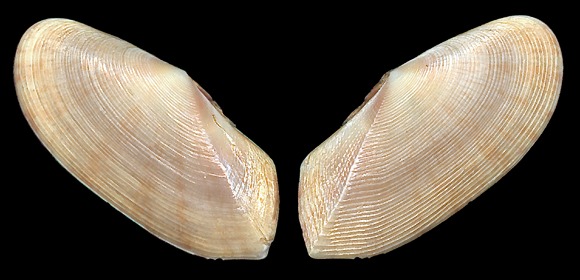
Original taxon: Tellina fervensis.
This is the « Faeroe Sunset Clam ».
30m deep, in sand, Málaga, Andalucia, S. Spain. 24mm.

An other shell from Málaga. 34mm.
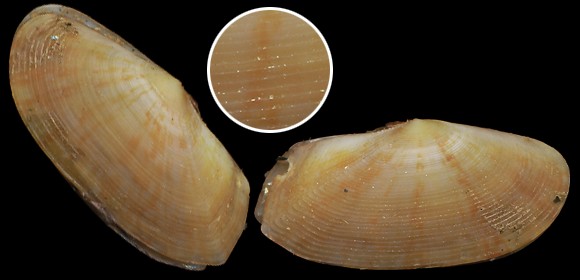
Trawled at 45m deep, in mud, off Barcelona, Catalunya, NE. Spain. 17mm.

The word “grau” comes from latin gradus – river mouth – and “nouvelle” from navaculum, the harbour.
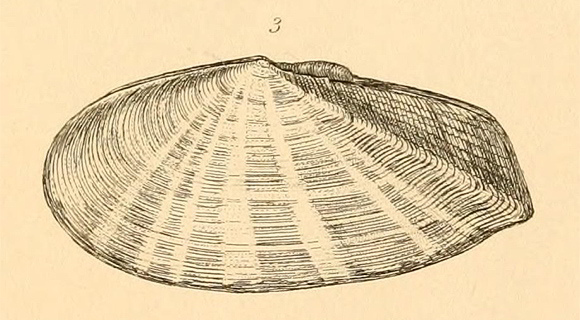
« With raised concentric striae, which are decussated behind by a few elevated radiating lines. […]
When fresh taken it is usually covered with a dull ashy olive-coloured epidermis, beneath which the surface, which possesses but little if any lustre, is either
rayed with madder-lake and white, (the preponderance of colour varying with the individual) or marbled in a linear fashion, with the former, on a whitish or
pale-coloured ground. It is closely striated for its entire length with raised concentric lines, which not unfrequently at their posterior termination dentate
the hinder dorsal edge. These striae are decussated beyond the umbonal ridge, which is indicated by a sharp elevated line, by a few fine radiating ones,
which in the adult, however, do not quite proceed to the extremity of the shell. » Etc.
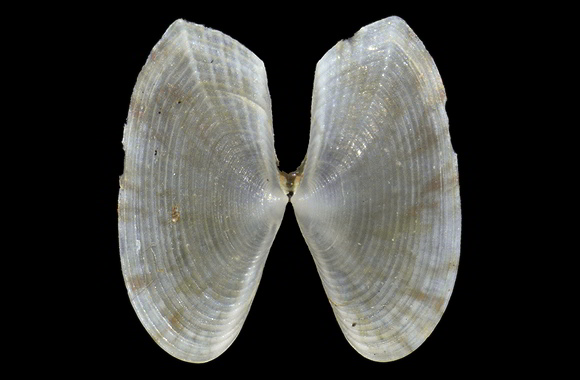
Original picture provided by A. Bertrand (FR).
– (CC BY-NC-SA) –

« Oblong, keeled and angulated behind. »
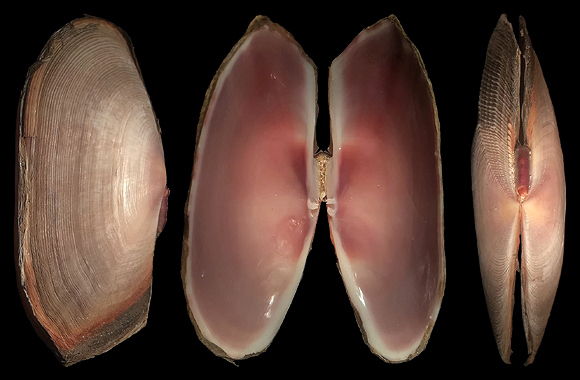
Original pictures provided by N. Lete (HR).
– (CC BY-NC-SA) –